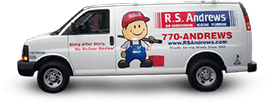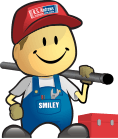Crack the Code: Home Plumbing Checkup Made Easy
When it comes to taking care of your humble abode, one aspect you don’t want to overlook is your plumbing. After all, it’s the lifeline of your house, keeping the water flowing, the showers refreshing, and the toilets flushing. In this comprehensive guide, we’re diving headfirst into how to check the plumbing in your house. So, grab your wrench, put on your detective hat, and let’s get to work!
Essential Plumbing Tools for Homeowners
Before we get into the basics of what to look for, there are some tools that every homeowner should have on hand for quick repairs. Having a basic set of plumbing tools handy can be a lifesaver when dealing with minor plumbing issues.
Here are insights into essential tools and instructions on how to use them for basic repairs:
1. Adjustable Pliers
Adjustable pliers, also known as tongue-and-groove pliers or channel-lock pliers, are versatile tools used for gripping, turning, and tightening various plumbing components. They are used to grip and tighten nuts, bolts, and fittings. They’re handy for securing connections on faucets, supply lines, and toilet fixtures. Adjust the pliers to fit the size of the nut or bolt, then turn in a clockwise (right) direction to tighten or counterclockwise (left) to loosen.
2. Pipe Wrenches
Pipe wrenches are designed for turning and gripping pipes and fittings with rounded or hexagonal shapes. To use a pipe wrench, place the wrench’s jaw around the pipe or fitting. The teeth of the wrench should be pointing in the direction in which you are turning it. Turn the pipe or fitting by applying pressure to the wrench handle. The jaws of pipe wrenches can be adjusted to fit different sizes of pipes.
3. Plumber’s Tape (Teflon Tape)
Plumber’s tape is a thin, white tape used to create a watertight seal between threaded plumbing connections. When working with threaded connections, apply the plumber’s tape to the threads in a clockwise direction. Wrap the tape around the threads two to three times, ensuring it’s snug but not excessively tight. This helps prevent leaks when the connection is tightened.
4. Plunger
Known as the “plumber’s helper,” a plunger is a simple tool used to clear clogs in drains, toilets, and sink traps by creating pressure and suction. When dealing with a clogged drain or toilet, place the plunger over the drain opening or toilet bowl outlet. Create a tight seal by pressing down gently and then rapidly pulling up. Repeat this motion several times to dislodge the clog. For sinks with two drains, block the unclogged drain to ensure proper suction.
5. Pipe Cutter (Optional)
A pipe cutter is used to cleanly and precisely cut through pipes. Pipe cutters provide clean, straight cuts for replacing sections of pipe. Place the cutter’s wheel on the pipe where you want to make the cut. Rotate the cutter around the pipe while applying gentle pressure until the pipe is severed. Remove any burrs using a deburring tool or sandpaper.
Remember, while these tools are excellent for tackling minor plumbing repairs, it’s crucial to know your limits. For complex or major plumbing issues, it’s best to consult a professional plumber to avoid causing more significant damage or compromising your safety. Additionally, always turn off the main water supply using the information from the previous response before attempting any plumbing repairs to minimize the risk of water damage.
Plumbing Inspection Checklist
Here are some home plumbing inspection tips to help homeowners keep their plumbing in good shape:
Bathroom:
- Sinks and Faucets:
- Check for leaks around the base of the faucet.
- Ensure hot and cold water faucets function correctly.
- Toilet:
- Look for any leaks around the base.
- Ensure the flush mechanism operates smoothly.
- Shower and Bathtub:
- Inspect the showerhead for leaks.
- Check for any signs of water damage on walls or floors.
- Drains:
- Test drain speed and look for slow drainage, which may indicate a clog.
Kitchen:
- Sink:
- Examine the sink and faucet for leaks.
- Check the garbage disposal for proper operation.
- Dishwasher:
- Inspect the connections for leaks.
- Ensure the dishwasher fills and drains properly.
- Refrigerator:
- Check the water line for leaks, if applicable.
Laundry Room:
- Washing Machine:
- Inspect hoses for wear or leaks.
- Ensure the machine fills and drains correctly.
Basement:
- Water Heater:
- Look for signs of rust or leaks around the water heater.
- Check the temperature and pressure relief valve.
- Main Water Supply and Shut-Off Valve:
- Test the main shut-off valve to ensure it operates smoothly.
- Check for signs of leaks or corrosion on the supply pipes.
- Sump Pump (if applicable):
- Ensure the sump pump is working correctly by pouring water into the pit and observing the pump’s operation.
General Plumbing Checks:
- Visible Pipes:
- Inspect all visible pipes for signs of corrosion, rust, or damage.
- Water Meter:
- Check the water meter while all water sources are turned off to detect hidden leaks.
- Water Pressure:
- Use a pressure gauge to check water pressure. Low or high pressure can be indicative of issues.
- Septic System (if applicable):
- Inspect the septic tank for any signs of leakage or damage.
- Drainage System:
- Check the exterior drainage system, including gutters and downspouts, to ensure water is directed away from the foundation.
Remember that this is a general checklist, and the specific items to inspect may vary depending on your home’s plumbing system and individual needs. Regular inspections can help identify and address issues early, preventing costly repairs and ensuring the long-term health of your plumbing system.
Outdoor Plumbing Check
Outdoor plumbing checks are important to ensure the proper functioning of your exterior water supply and drainage systems. Here’s a list of plumbing checks to perform outdoors:
- Outdoor Faucets and Hose Bibs:
- Inspect all outdoor faucets and hose bibs for leaks or drips.
- Check for visible damage or corrosion on these fixtures.
- Irrigation System:
- If you have an irrigation system, test each zone to ensure that sprinklers and drip lines are working correctly.
- Look for any water pooling or overspray onto structures.
- Outdoor Drains and Downspouts:
- Clear debris from outdoor drains, including those connected to your gutter downspouts.
- Ensure that downspouts are directing water away from your home’s foundation.
- Swimming Pool or Hot Tub (if applicable):
- Inspect pool or hot tub plumbing for leaks or damage.
- Check the filtration system for proper operation.
- Outdoor Piping:
- Examine any exposed outdoor pipes for signs of rust, corrosion, or damage.
- Verify that all connections are secure.
- Backflow Prevention Device (if applicable):
- If you have a backflow prevention device installed, ensure it is functioning correctly and hasn’t been damaged.
- Outdoor Sump Pump (if applicable):
- If you have an outdoor sump pump, check that it operates as expected by pouring water into the pit and observing its performance.
- Septic System (if applicable):
- Inspect the septic tank and drain field for any signs of damage, leakage, or overgrowth.
- Outdoor Plumbing Fixtures:
- Check the condition of any outdoor sinks, showers, or fountains for leaks or damage.
- Exposed Piping Insulation (in cold climates):
- In regions with cold winters, ensure that any exposed outdoor pipes are properly insulated to prevent freezing and bursting.
Additional Tasks
Clean Gutters and Downspouts: Properly functioning gutters and downspouts help prevent water from overflowing and damaging your foundation. Keep them clear of debris to ensure water flows away from your home.
Schedule Professional Inspections: While these DIY checks are valuable, it’s also essential to schedule regular professional plumbing inspections. A licensed plumber can perform a more thorough assessment and catch potential issues early.
Frequently Asked Questions (FAQs)
How often should I schedule a plumbing checkup for my home?
It’s recommended to schedule a plumbing checkup at least once a year, even if you don’t notice any issues. However, if you have an older plumbing system or have experienced problems in the past, more frequent checkups, such as every six months, may be advisable.
What are some signs that I might have a hidden plumbing leak?
Signs of hidden leaks can include unexplained increases in your water bill, water stains on walls or ceilings, mold growth, or a musty odor in certain areas of your home. If you suspect a hidden leak, it’s crucial to have it investigated promptly to prevent further damage.
Can I perform a plumbing checkup myself, or should I always hire a professional?
While there are basic DIY checks you can perform, such as inspecting visible pipes and fixtures, it’s advisable to have a professional plumber conduct a comprehensive checkup at least once a year. They have the experience and tools to detect hidden issues and ensure your plumbing system is in top shape.
How can I prevent frozen pipes during winter?
To prevent frozen pipes, insulate exposed pipes, keep your home adequately heated, and allow faucets to drip slowly during extremely cold weather to maintain water flow. A professional plumber can also help with winterizing your plumbing system.
Are there any DIY maintenance tasks I can do to prolong the life of my plumbing fixtures?
Yes, you can perform tasks like cleaning faucet aerators, periodically flushing your water heater, and using drain screens to prevent clogs. Regularly checking for leaks and addressing them promptly is also an essential DIY maintenance practice.
Remember, it’s not just about saving money on costly repairs; it’s about ensuring the comfort and safety of your home. So, keep an eye out for those warning signs, and if things get too tricky, don’t hesitate to reach out to the plumbing pros at R.S. Andrews. They’ve got your back when it comes to all things plumbing. Stay dry, stay safe, and keep those pipes in tip-top shape!






